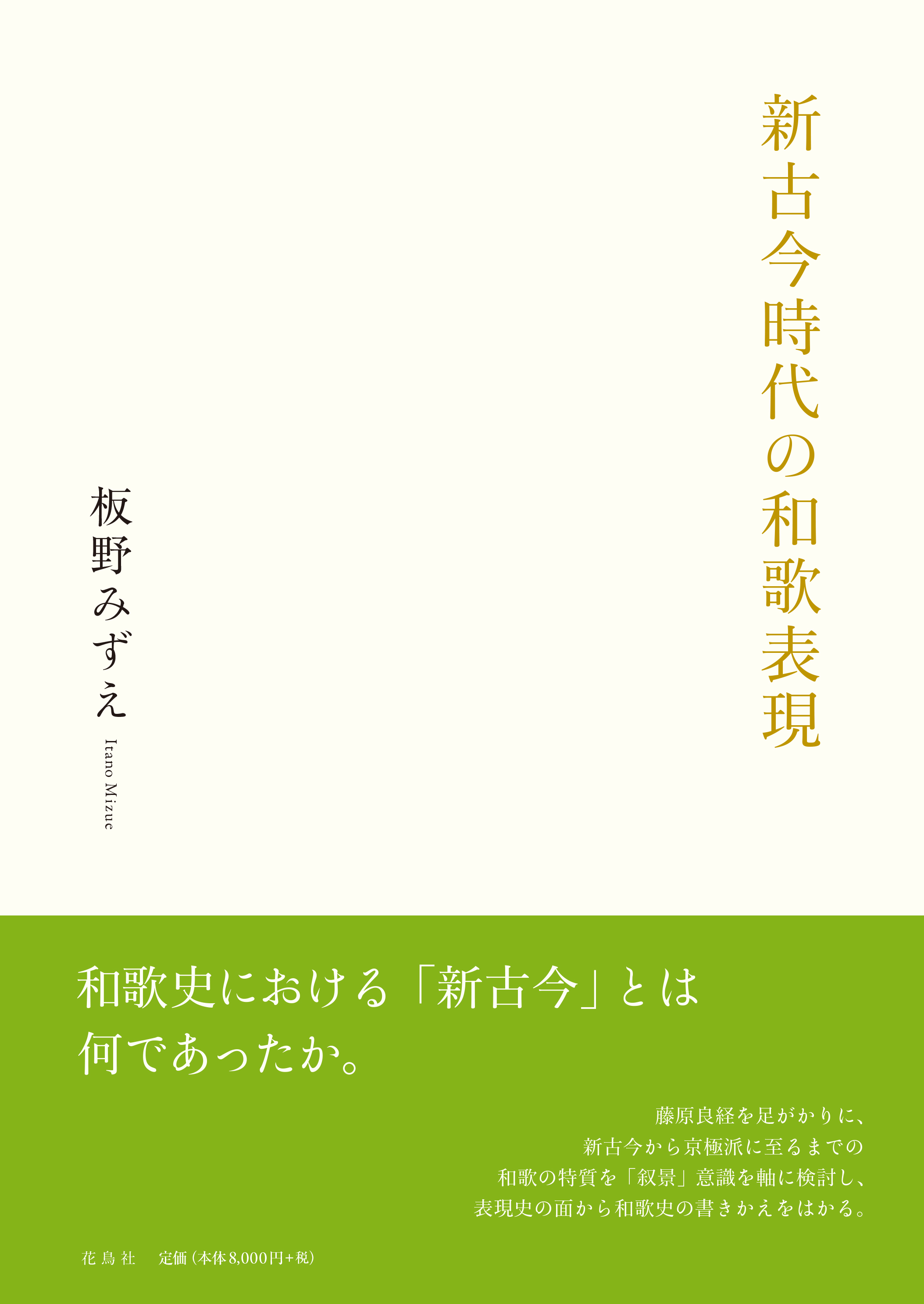
Title
Shinkokin Jidai no Waka Hyogen (Poetic Expression in the Shinkokin Period)
Size
336 pages, A5 format, hardcover
Language
Japanese
Released
January 30, 2024
ISBN
978-4-909832-84-9
Published by
KACHOSHA
Book Info
See Book Availability at Library
Japanese Page
In the history of Japanese poetry, the Man’yōshū, Kokin wakashū, and Shinkokin wakashū are held in equally high regard, but poetic expression in the Shinkokin period, said to be one of the end points in the history of classical waka poetry, can still not be said to have been fully elucidated, partly because many of the poems are difficult to comprehend. Various experiments in modes of expression were undertaken on the eve of the Shinkokin period, making the range of expression in this period quite broad, and this too has made the analysis of its poetic expression difficult.
Using as a lead Fujiwara no Yoshitsune, a prominent figure in poetic circles on the eve of the Shinkokin period, this book examines waka of the Shinkokin period, especially from the viewpoint of the awareness of “scenic description.” It covers the period up until the Kyōgoku school, whose connections with the Shinkokin period have been pointed to in prior research, and endeavours to rewrite the history of waka from the perspective of the history of modes of expression.
“Scenery” in waka cannot exist independently of the “mind” or “heart” in a broad sense. In other words, it is safe to say that “scenic description” as the pure and simple description of scenery, exclusive of emotion and subjectivity, does not exist. But scenery itself has been repeatedly incorporated in waka. What do expressions relating to scenery signify in such cases?
In this book, the awareness of scenic description in individual poems is analyzed with a view to examining the functions that “scenery” fulfilled in poems by Shinkokin poets and the form in which the “mind” or “heart” existed in these poems.
In Part 1, there is presented an overview of records about Fujiwara no Yoshitsune’s activities in poetic circles, including hitherto scattered and lost materials, which had until now never been brought together in one place. In particular, I undertake an analysis focusing on the subject matter of poems, and by paying attention to modes of expressions characteristic of Fujiwara no Yoshitsune’s own poems, I examine him from the twin aspects of a patron of poetic circles and a poet and reposition him in the history of waka. The awareness of scenic description stimulated in Yoshitsune’s poetic circles flowed on into poetic expression of the Shinkokin period.
In Part 2, I explore the awareness of scenic description in this period through an analysis of modes of expression characteristic of poems of the Shinkokin period. It can be inferred from the expression yoso taken up in chapter 1, the expression nagamu taken up in chapter 5, and the expression mi taken up in chapter 6 that it had become impossible to use scenery to directly convey one’s thoughts. The scenery and the mind or heart were sometimes distorted in complex ways and were given expression in a poem while being alienated from each other.
Part 3 clarifies the changes that this mode of scenery underwent after the Shinkokin period. It has been pointed out that the poems of the Shinkokin period and those of the Kyōgoku school have a point in common in that they are both different in nature from other waka in the long history of waka. It is true that there are examples of some unusual modes of expression born in the course of the trials and errors of the Shinkokin period having flowed into poems of the Kyōgoku school. But it would be hazardous to link the two solely on this basis. There is a need to relativize the issues anew while analyzing the poems of the Shinkokin period and the Kyōgoku school.
The question of scenic description in waka is an important issue that has also had bearings on discourse about tanka since the modern period. But any issue must be approached by accumulating evidence from the ground up. Paying attention to particular expressions one by one is like counting the grains of sand on the beach, and just thinking about it makes one feel dizzy. Nonetheless, every grain of sand possesses its own weight, and I hope that I have been able to convey through this book just how enjoyable the task of counting each and every one of them is.
(Written by: ITANO Mizue / March 04, 2024)
Related Info
The 4th UTokyo Jiritsu Award for Early Career Academics (The University of Tokyo 2023)
https://www.u-tokyo.ac.jp/ja/research/systems-data/n03_kankojosei.html



